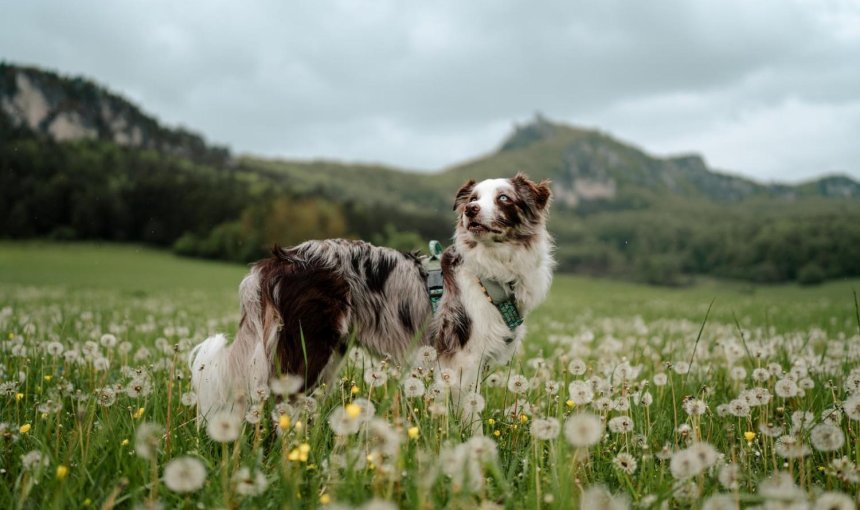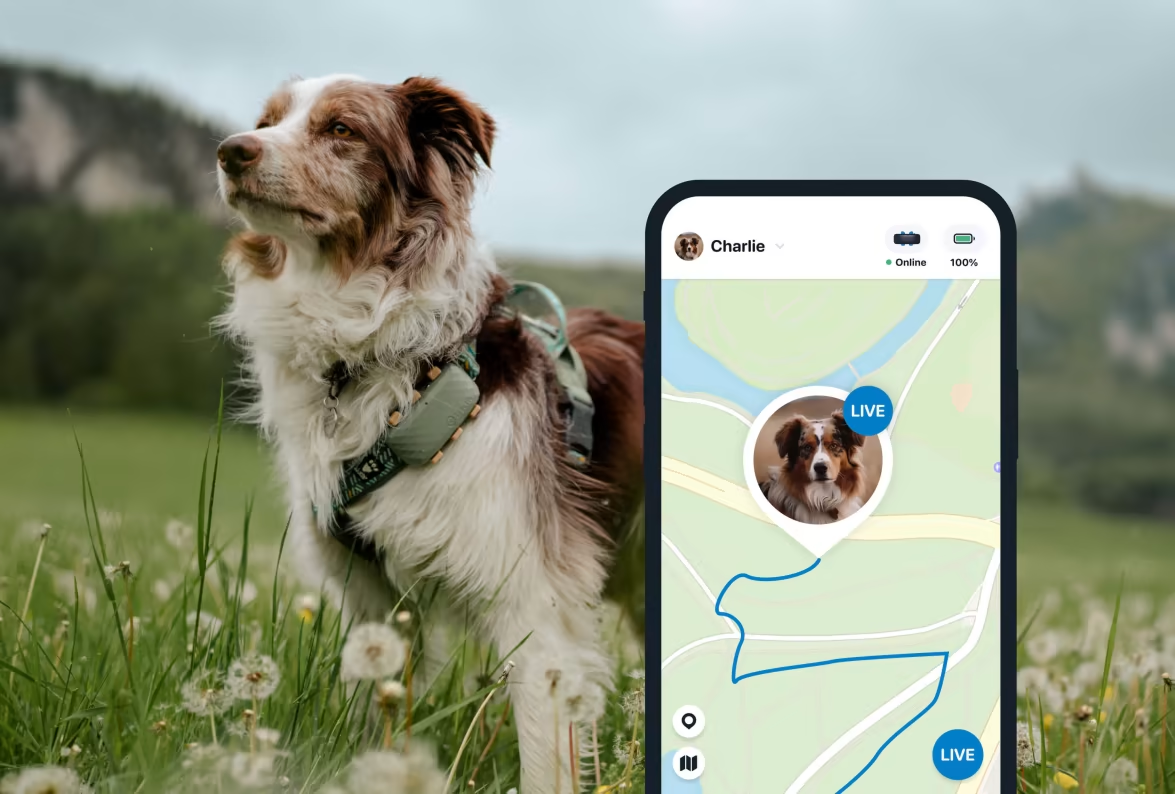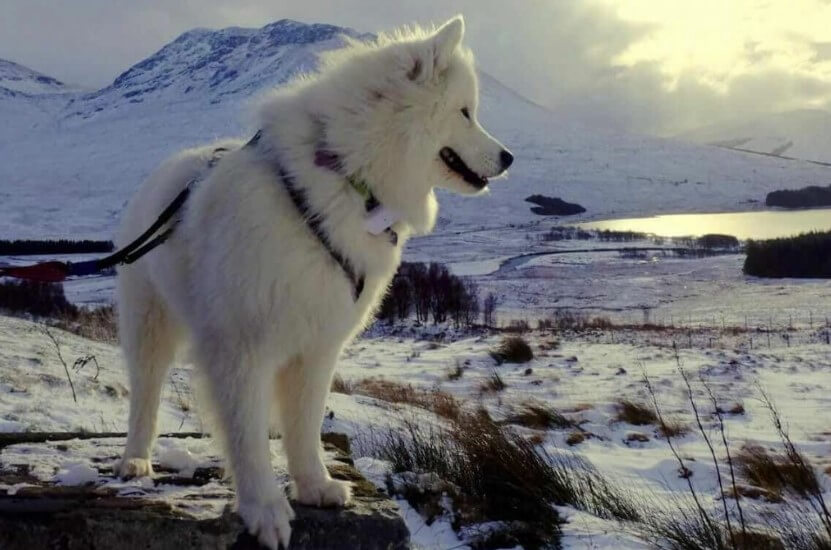Ageless Tails: 10 Longest Living Dog Breeds
The average dog has a lifespan of around 10-13 years - but how about the world's longest living dog breeds?

Here are 10 dogs that score an A+ on the longevity scale – and also why some dogs tend to live longer than others.
tReadt more: How To Convert Dog Years To Human Years To Find Your Dog’s Real Age

Always know your buddy is healthy & safe
Read moreThe top 10 longest living dog breeds – and how to keep them safe
Papillons
Starting off with the longest living small dog breeds is the Papillon – a charming little dog named for their butterfly-shaped ears. They tend to live anywhere between 15-17 years and are highly intelligent, trainable dogs that do excellently with families.
Papillons tend to quite friendly by temperament, but they do need a little time to warm up to strangers. And despite their fluffy coats, they’re actually quite low-maintenance – only needing brushing a few times per week.
Yorkshire Terriers
Another small dog breed that tends to live quite long are Yorkshire Terriers who tend to average 12-15 years. Despite their small size, Yorkies are packed with a ton of energy and love nothing more than to run and play with their parents.
In fact, Yorkies have even played a role as war dogs! Like Smoky, a Yorkie who served in the Second World War under Corporal William A. Wynne – once even saving his life by warning him of incoming bombshells while on a ship. She went on to earn 8 battle stars, participate in 12 combat missions, and even parachuted 30 feet from a tree!
Australian Shepherds
If you’re looking for the perfect running, jogging, sports, or hiking partner – look no further than the Australian Shepherd. These active, high-energy dogs tend to live between 11-13 years and were bred as herding dogs. (Which explains why they just can’t sit still most of the time.)
Funnily enough, Australian Shepherds aren’t actually native to Australia – but rather the US! They were used to running around herding sheep in 19th century California. With time, they became popular rodeo performers – performing tricks due to their high intelligence and energy. Here’s one wearing a Tractive GPS tracker for max safety:

Miniature Schnauzers
The most distinguished looking of the longest living small dog breeds: Miniature Schnauzers! Much like Yorkies, they also tend to live around 12-15 years – and are laid-back, friendly dogs that go well with families.
Originally from Germany, these little buddies were raised to hunt down smaller animals, including mice and rabbits. It’s why Miniature Schnauzers tend to have a high prey drive – or a hunting instinct.
Samoyed
Another floofy long living dog breed, Samoyeds are a medium-sized dog breed originating from Siberia. Originally bred as sled and herding dogs, Sammies tend to live between 12-14 years. They’re friendly, highly active, and need a ton of exercise to stay happy and healthy.
Sammies are commonly referred to as a hypoallergenic dog breed – though they do tend to shed quite a bit. So make sure to stay on top of their grooming, since their thick double coat needs some maintenance.
Here’s Sally the Samoyed, who adventures off-leash – with a little help from her Tractive device strapped to her harness.

Pomeranians
Next on our list are the floofiest long living small dogs: Pomeranians! Clocking in at a 12-16 year lifespan, Poms are a lively, playful, energetic breed that love to learn new tricks and be the center of attention.
Just watch out: your little Pom may be a little on the domineering side! Because of their small size, Pomeranians often bark at other dogs and humans. (Trying to show them who’s boss.)
Schipperke
Ever heard of a dog from the Netherlands – whose name also translates to “little captain”? Meet the Schipperke, an active, inquisitive miniature sheepdog breed that’s always on the move! Schipperkes tend to live to around 13-15 years, though some have grown as old as 18-19 years.
Much like Yorkies, Schipperkes have also been heroic war dogs during the Second World War – helping the Belgian Resistance deliver messages between their hideouts.
These high-energy dogs are also highly fond of water, often splashing around and enjoying a dip in ponds and pools. Schipperkes used to be known as “canal boat dogs” – but their primary role as working dogs was to herd livestock around.
Jack Russell Terriers
One of the healthiest longest living dog breeds, Jack Russell Terriers are excellent family dogs and love nothing more than to run around open spaces. With proper care, they can live between 13-16 long, happy, active years by your side. (And yes, they actually are named after Reverend John “Jack” Russell who originally bred, raised, and trained them back in early 19th century UK.)
Jacks Russells tend to be friendly, intelligent, and athletic – but they do tend to get bored easily if they’re not physically or mentally stimulated enough. (They were trained as working dogs meant to hunt and chase down foxes, after all.)
Shiba Inus
Easily the most famous dog on the internet, Shiba Inus are a medium-sized long living dog breed that’s native to Japan. They tend to live between 12-15 years.
But don’t be fooled by their chill appearance – Shibas used to be trained as hunting dogs and are excellent companions if you’re fond of running and hiking on mountain trails. These fluffy dogs are also pretty low-maintenance, being quite independent by temperament. You can safely leave one at home for a couple of hours without having to worry about them getting up to much mischief.
Beagles
Excitable, affectionate, and very cuddly – Beagles are another medium-sized long living dog breed that tend to live around 12-15 years. They’re famous for having one of the best senses of smells among all dogs – along with their cousins, Bloodhounds and Basset Hounds. Beagles are excellent family dogs and get along well with children. They’re quite gentle, temperament-wise – and once they’ve overcome their initial shyness around strangers, they’re quite easy to win over.




